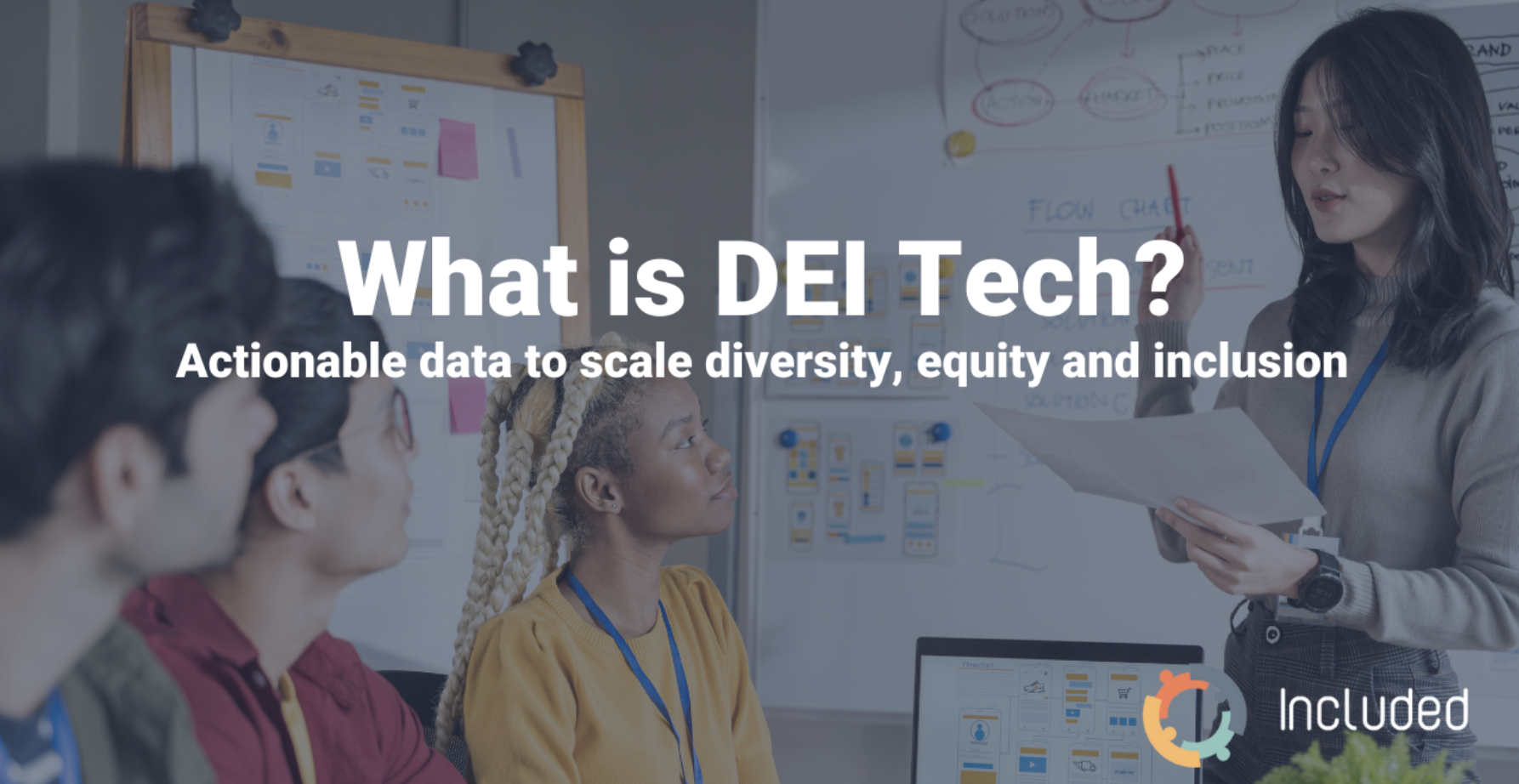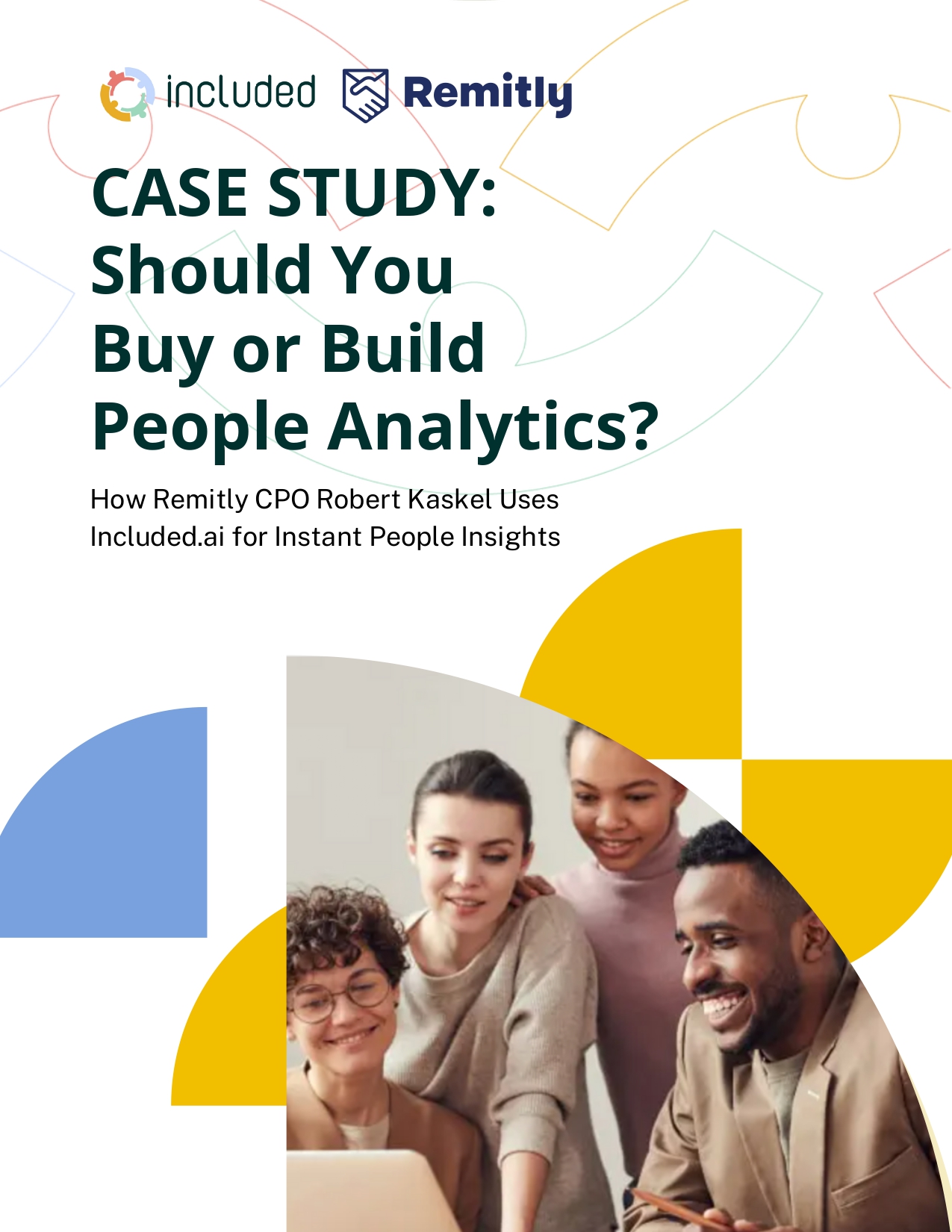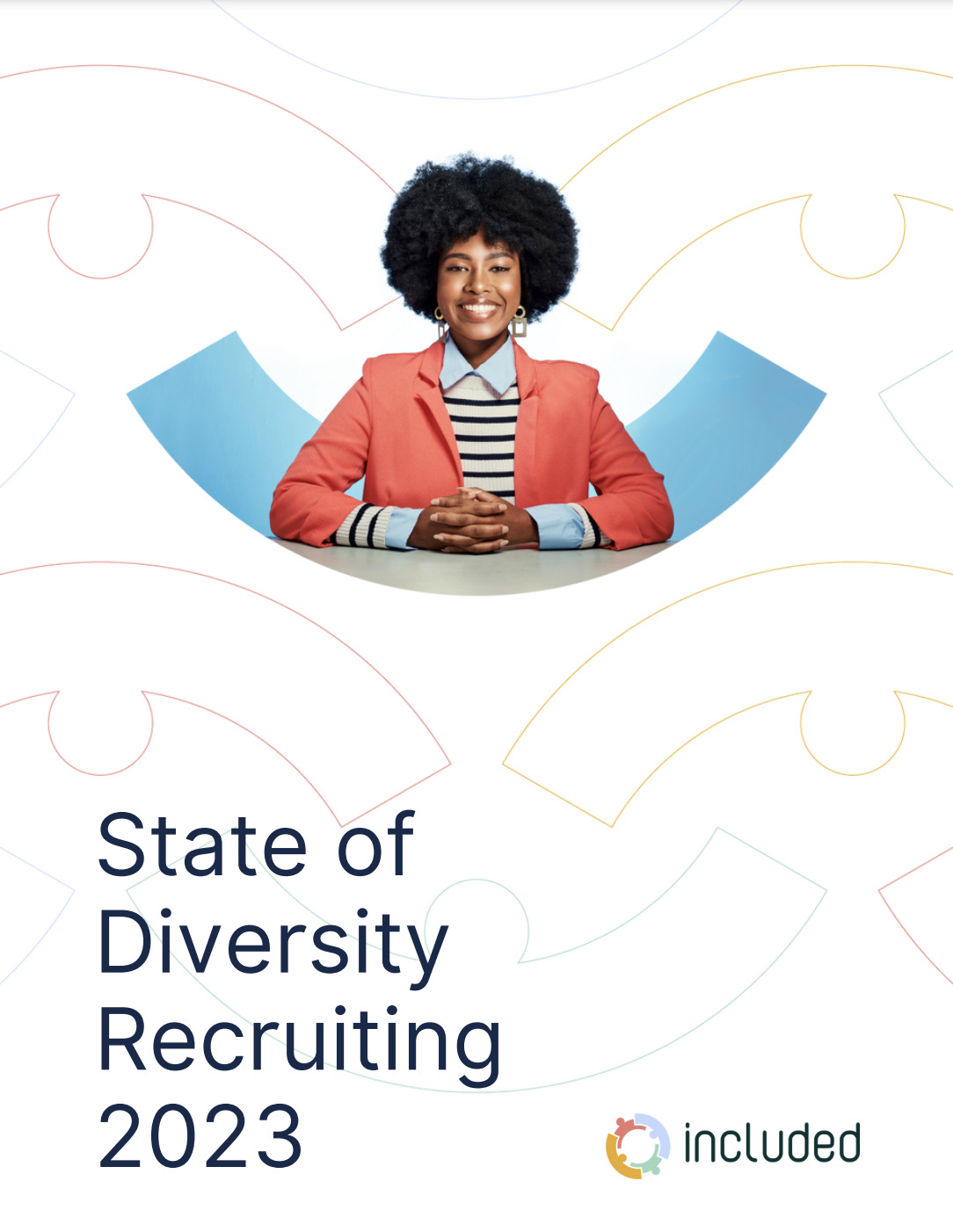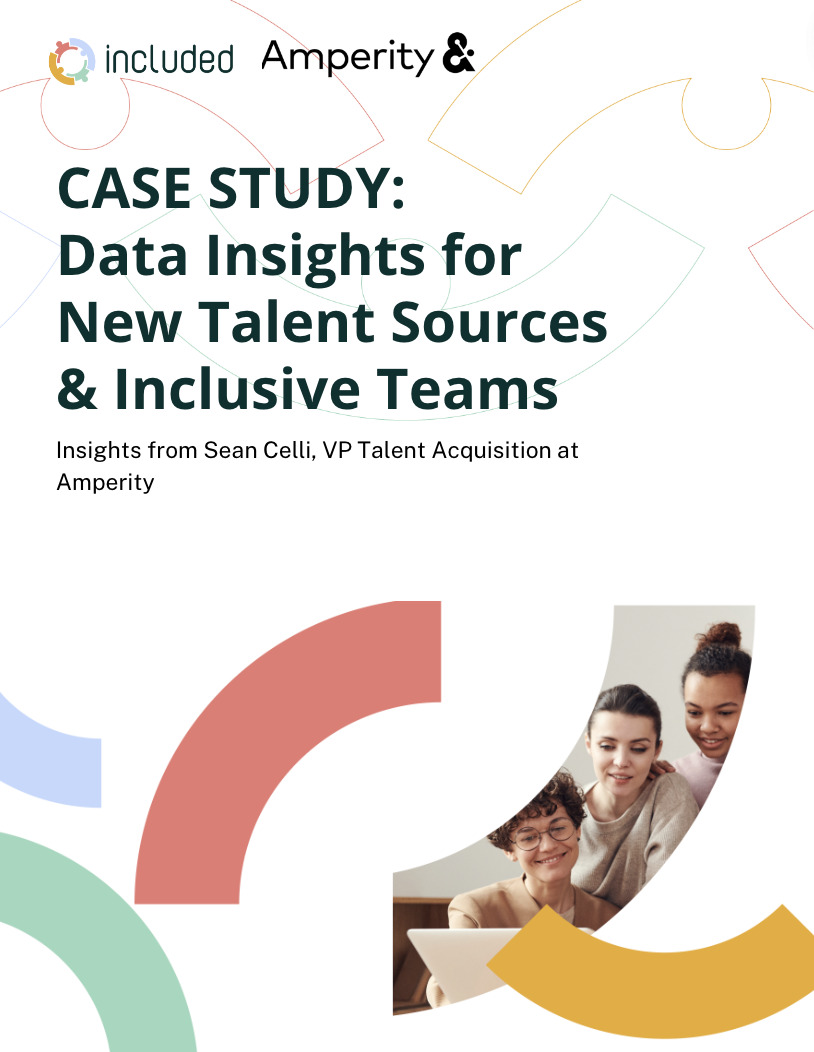We’ve all seen the stats: companies that have higher degrees of racially and ethnically diverse employees have a 35% performance advantage over companies relying on a “culture fit” that tends to trend white and monocultural. We’ve also seen the need for greater diversity in tech demonstrated in the release of products like AI that can’t distinguish between genders in darker faces due to the avoidable mistakes of a too-white dev team.
The field of Diversity, Equity, and Inclusion (DEI) is in a moment of explosive growth, with countless enterprises launching efforts to build and retain a diverse workforce. However, while this is unquestionably an exciting and long overdue development, demand has grown at a much faster rate than the technology CDOs and their teams need to scale their programs.
Like any other aspect of a functional enterprise, DEI requires cutting edge technology and solutions.
Enter DEI Tech.
DEI tech equips the newly appointed CDOs, CPOs, and talent leaders with scalable platforms, and provides just-in-time solutions to the HR leaders now prioritizing DEI OKRs and KPIs. Using iterations of artificial intelligence and machine learning technologies that have been used to scale everything from marketing to operations, the new wave of DEI tech platforms are being built as we speak.
What is DEI Tech?
In my research I’ve found very little definition for this critical and still emerging technology space.
Here is what you need to know:
Diversity, Equity, and Inclusion Technology, or DEI tech, is defined as software that helps improve diversity within organizations by allowing the discoverability, enrichment, and actionability of demographic data.
It allows businesses and other groups to
- assemble diversity data
- measure their progress
- control for and reduce bias
- expand their diverse talent pipelines
- run inclusion programming for their teams
- and develop products with historically excluded communities as the end-user.
This includes promoting equity for Black, Indigenous, and People of Color, women, LGBTQIA+, English language learners, first generation immigrants, disabled people, neurodivergent people, veterans, and other historically excluded and underrepresented groups.
DEI tech enables the discoverability, enrichment, and actionability of demographic data to promote the scaling of diversity, equity, and inclusion initiatives.
We are now seeing the emergence of secure, streamlined platforms that prioritize people’s experiences depending on their demographics.
The first entrants to the DEI tech space have focused on providing scalable access to the tried and tested programmatic aspects of DEI by stitching together pre-existing technology tools to disseminate content, education, encouragement, and inclusion via surveys and discussion. Kudos belongs to the forward thinking business leaders and DEI advocates who first piloted this approach.
These preliminary tech solutions can make DEI work more simple, and can lead the way to more humane outcomes. And yet, these solutions are not enough as there has been very little use of data to identify issues, provide recommendations, and to track and measure progress.
As a CTO turned CEO and software founder it was hard to miss the glaring need for data platforms specifically built to support the ability of companies to operationalize DEI processes and embed its policies. I saw the unmet need to make DEI data easy to visualize, understand, and act on.
On the journey to found my company, Included, DEI leaders and Chief People Officers have described to me time and again the “fishing expedition” they must go on in order to locate the data they need to tell the diversity story of their company.
In contrast to true DEI tech, these leaders have been muddling through with repurposed HR tools that offer poorly collected, disorganized demographic data. They spoke to me about the painful, manual nature of how they must knit the data together by hand before moving into interpretation.
Data-driven executives, people managers, recruiters, and DEI leaders, like those mentioned above, need continuous visibility into their company’s diversity story throughout the employee life-cycle in order to drive significant change in hiring, retaining and promoting a truly global and diverse workforce. Without it, they face an uphill battle of trying to break down complex people data so that it can be easily understood and acted on.
Consider the difference between saying: “We need to recruit more women and people of color!” or, with DEI tech, being able to say “Currently, 35% of white men who go through our screening get an interview. Asian women are offered interviews at a rate of 13%.” The former is a vague non-specific “goal.” The latter is a call to action.

The Included platform makes complex data simple and actionable.
DEI tech centers the discoverability, enrichment, and actionability of demographic data.
This tech should be evaluated by two key frameworks:
- Ability to deliver enablement for business leaders to instantly know and grow their company’s diversity story.
- Use of design equity principals to create data, product and user experiences that start with the assumption of historically excluded communities as the end user personas.
Just as our society has moved from “tolerance” to “equity,” now our tools and technology must be challenged to evolve from their origin point. DEI tech is not simply oriented toward equity, it is built into the products’ DNA.
DEI tech is not HR tech
Building on the advances offered by HR tech, DEI tech centers retaining and promoting a diverse workforce. In order to avoid the pitfalls of HR tech based around what has “worked” in the past, DEI tech focuses on building an inclusive future.
While DEI tech and HR tech are complimentary, they are not to be conflated. HR teams have benefited enormously from automation and analytics, but these technologies were not created to center the stories and experiences of historically excluded and underrepresented groups.
Too many points in the recruitment, onboarding, career development, retention and promotion processes are subject to hidden biases.
When looking at well-visualized data we begin to see the larger patterns behind individual actions and can then allow the data to guide us toward the questions we may not have known to ask. Who is getting washed out of the hiring funnel, and when? By whom?
The data-first method corrects for the failures of the outdated “train our way out of racism” approach that some studies have shown to activate bias and cause more backlash than benefit.
From a data-driven vantage point, we can actively shape change by layering demographic data on top of employee life-cycle data and making the needed shifts laid bare by the numbers.
We can also let the data guide us to improved ROI throughout the recruitment and retention cycle. DEI tech can spot early warning signs that could cost you a ton in employee attrition or longer hiring cycles. The Included platform, for example, sends automated nudges based on your DEI goals so that, well-before an unaided recruiter could organically notice that the candidate slate lacks diversity, you’d have already been nudged to source those candidates, shortening time-to-hire.

HR tech was not designed to deliver the ability to measure and grow diversity, equity and inclusion within the enterprise, and as such leaders who rely on traditional HR technologies, even when they adopt recently released, tacked on “DEI modules” —are doomed to recreate extant bias.
DEI tech must measure and automate to scale
At Included we’re creating a future where companies design their people processes by centering the journey and experiences of diverse and historically underrepresented employees. We’re helping employers reduce the $500B annual costs of productivity loss due to disengagement and attrition, and making sure they’re able to attract the best talent, 76% of whom report that a diverse workforce is an important factor when evaluating companies and job offers.
Our customers use the Included AI-powered DEI data platform to eliminate the scattered and siloed legacy of demographic data, and apply machine learning to illuminate hidden bias throughout the employee life cycle stages. Put simply, we bring the same high performance capabilities to DEI that that all other parts of the enterprise naturally rely on to achieve global results.
No longer does HR need to manually stitch disconnected data and attempt to sift through millions of data combinations, looking for trends and problems. Included breaks the data down in a way that tells DEI leaders not only the current state of things but also makes next steps crystal clear.
Let’s be real: you already know you have problems. We can tell you what they are and help you know what to do about it.
Inspired by my own experiences as an engineering leader and CTO, I’m proud to build the scalable DEI tech that will help shape the workforce my own daughter will someday enter. I know her contributions and others like her will not just be “accepted” but sought out and celebrated as a driving force in making more competitive, compelling products and services.
The future is inclusive, and as leaders of DEI tech, we can help by building a roadmap to that future.












